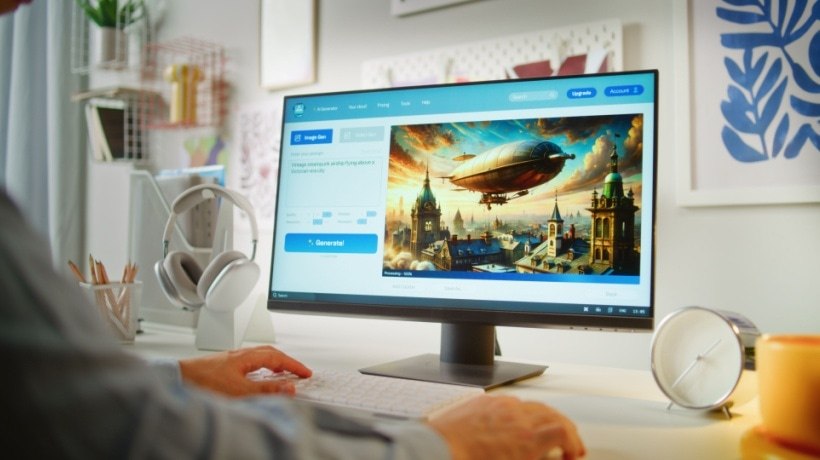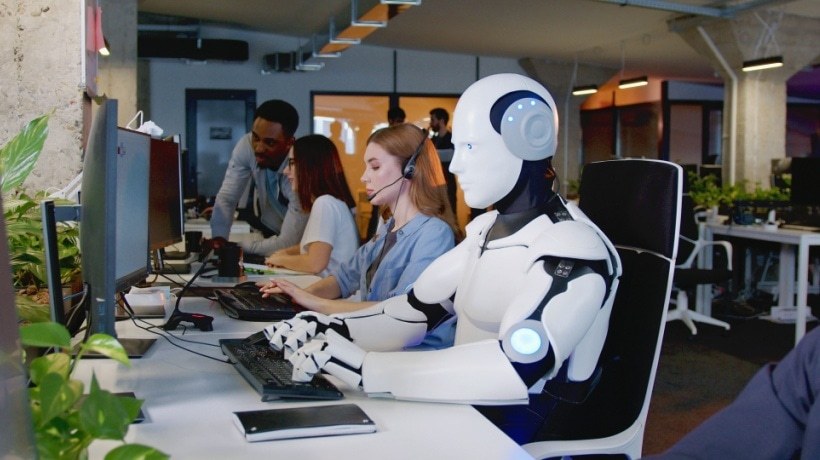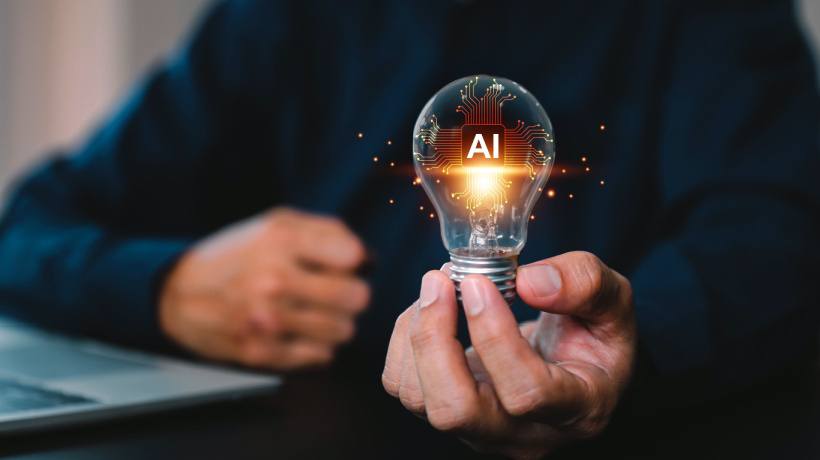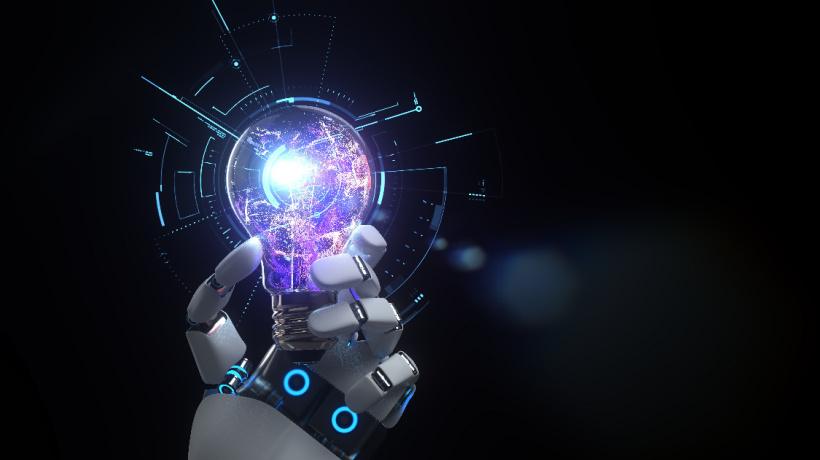The Rise Of AI In L&D
AI is increasingly becoming part of Learning and Development (L&D), especially for creating visuals and text used in modern eLearning programs. But why are AI image generators such helpful tools for Instructional Designers and eLearning professionals? In eLearning, visuals are a vital component. Research shows that learners remember more when the information they receive is accompanied by images, videos, infographics, or animations. That's because visuals can simplify complex ideas and make the experience more enjoyable.
As eLearning evolves to be more interactive and personalized, visuals must follow, too. With eLearning trends like microlearning, gamification, and storytelling being increasingly adopted in online courses, L&D pros must keep up. Up until recently, many L&D teams used stock images or graphic designers. However, these options can have limitations. Stock images often feel generic, custom designs take time, and graphic designers may not always be affordable or available. This is why the industry has decided to try AI image generators.
These tools create visuals based on simple text prompts. For example, you can type "a cheerful office setting with coworkers chatting around a table," and the AI will produce an image that matches your description. It works by using Machine Learning models that have been trained on tons of images. They are very useful for designing training content, gamification elements, or other materials that would usually take hours to design. Many of these tools offer free plans as well, or better, integrate with platforms that L&D teams already use, making it easy to try them without spending too much money. Below, we'll dive into all the benefits and challenges of using AI-generated images in eLearning, so you can decide for yourself if using them in your programs is worth it.
Benefits Of Using AI Image Generators In L&D
Speed
Creating visuals for training used to mean searching through many stock photo libraries or waiting for your design team to send their creations, which you would have to evaluate and then send back for editing. Of course, this could take days or weeks. Now, with AI image generators, you can create images instantly. Just type what you want to see, and your image will be ready soon. Whether you need a picture of a healthcare worker helping a patient or an infographic full of stats, all you have to do is describe it, and the AI will handle it. This is super useful for L&D teams, especially when projects change suddenly.
Customization
Personalization is one of the most effective strategies in L&D, and AI-generated images make it even easier. Instead of using generic images, you can now create pictures that represent your actual learners, including their roles, tools, and cultural backgrounds. For example, when designing a training course for a global workforce, AI tools can help you create visuals that depict different locations, workplace cultures, or even clothing styles. You can also make sure your visuals match your brand. If you want to use your brand colors or tone, AI can generate graphics that fit your style. This helps you keep a consistent look across all your training modules, even if you don't have an in-house designer.
Cost-Effectiveness
Hiring people to design illustrations can be costly. Even stock photo subscriptions can get expensive, especially when you're using lots of images. Thankfully, AI image generators can help if your budget is low. Instead of spending money on many images or waiting for designers, you can create the images you need, whenever you need them, often at a lower cost. Many AI tools do have usage fees, especially for the more advanced ones. However, when you compare these costs to those of the traditional method, you can still save a lot of money over time. Not to mention that some tools allow you to create images for free within a limit per day.
Inclusive And Diverse Visuals
Stock photos have improved, but they still often lack true diversity and representation. On the other hand, AI image generators allow you to create visuals that show diversity, including race, gender, age, ability, and body type. This is important because representation in training materials helps learners feel seen and valued. It makes them feel safer, and they find the learning content more relevant, leading to better learning outcomes. However, it's crucial to use these tools carefully. AI models can be biased, but when used thoughtfully, they can give you more control than stock libraries.
Flexibility In Creation
AI image generators offer a lot of creative freedom. You've probably struggled to find an image that portrays the exact idea you have in mind, especially when it's about vague concepts like empathy or data privacy. With AI, you can turn abstract concepts into visuals, and all it takes is a good prompt. This flexibility allows you to connect with learners, and it also enhances storytelling, which is key to effective learning.
What Are The Challenges L&D Pros Face When Using AI Image Generators?
Inaccuracy
One well-known issue with AI image generators is their inaccuracy, especially when it comes to depicting people's anatomy or words and phrases. For example, you might request an image of a professional woman giving a presentation, but you could end up with a woman with six fingers or a background with fake letters. Even though AI image generators are getting better, they often struggle with small details, especially in complicated scenes or realistic images. This is important for eLearning because any visual mistakes can distract learners or make your module look unprofessional.
Inconsistency
A major challenge with AI-generated images is their inconsistency. These tools often struggle to create the same person, setting, or style across different prompts. This can give you a hard time when you want to use the same character within a course to build storytelling. Some platforms let you use a reference image, but this can be time-consuming.
Biases
When using AI image generators, pay attention to bias and representation. These tools learn from data found online, which can lead to unintentional stereotypes and a lack of diversity. For example, you might see certain jobs always demonstrated by a specific gender or ethnicity. That's why it's important to review the images you create and always consider your values and the people you want to represent.
Training Time
AI image generators may seem easy to use, but many new users find that creating the right prompt takes skill. You need to describe exactly what you want, like style, angle, color, emotion, and activity. This requires some practice. Learning to use these tools can be challenging, especially for L&D teams that often have tight deadlines. Spending time figuring out prompts or testing multiple options to find one good image can be frustrating. Additionally, you may need to edit the final image to match your brand or fix small issues. This means you should allow some time for your team to learn before they create satisfactory AI-generated images.
Intellectual Property Issues
Who owns an image generated by an AI tool? Some AI models learn from large datasets taken from the internet, which may include copyrighted images. This can be especially risky for companies with strict legal rules. So, if you're creating images for healthcare or finance, it's important to check what is allowed. To be safe, use tools that clearly state where their training data comes from, and always read the terms of use before you share AI-generated images.
Privacy Concerns
You should be extra careful with privacy when using AI. You may think that it's harmless to use real learner or employee data to personalize content, but open AI platforms can store or process this information elsewhere. This is a huge risk of exposing sensitive data. Instead, use fake names or general examples when writing prompts. And don't forget to always check with your IT or legal team to see what's allowed.
Conclusion
AI image generators are powerful, but they are not magic. They work best when they apply your creativity, not replace it. This means that you still need to guide the process. So, consider trying a trial project first. Use AI to create visuals for one lesson or module, and then see how your learners react and how it fits into your work. The final decision is yours, but it's best to weigh all the options first, both the benefits and the challenges, before you decide on AI-generated images.









